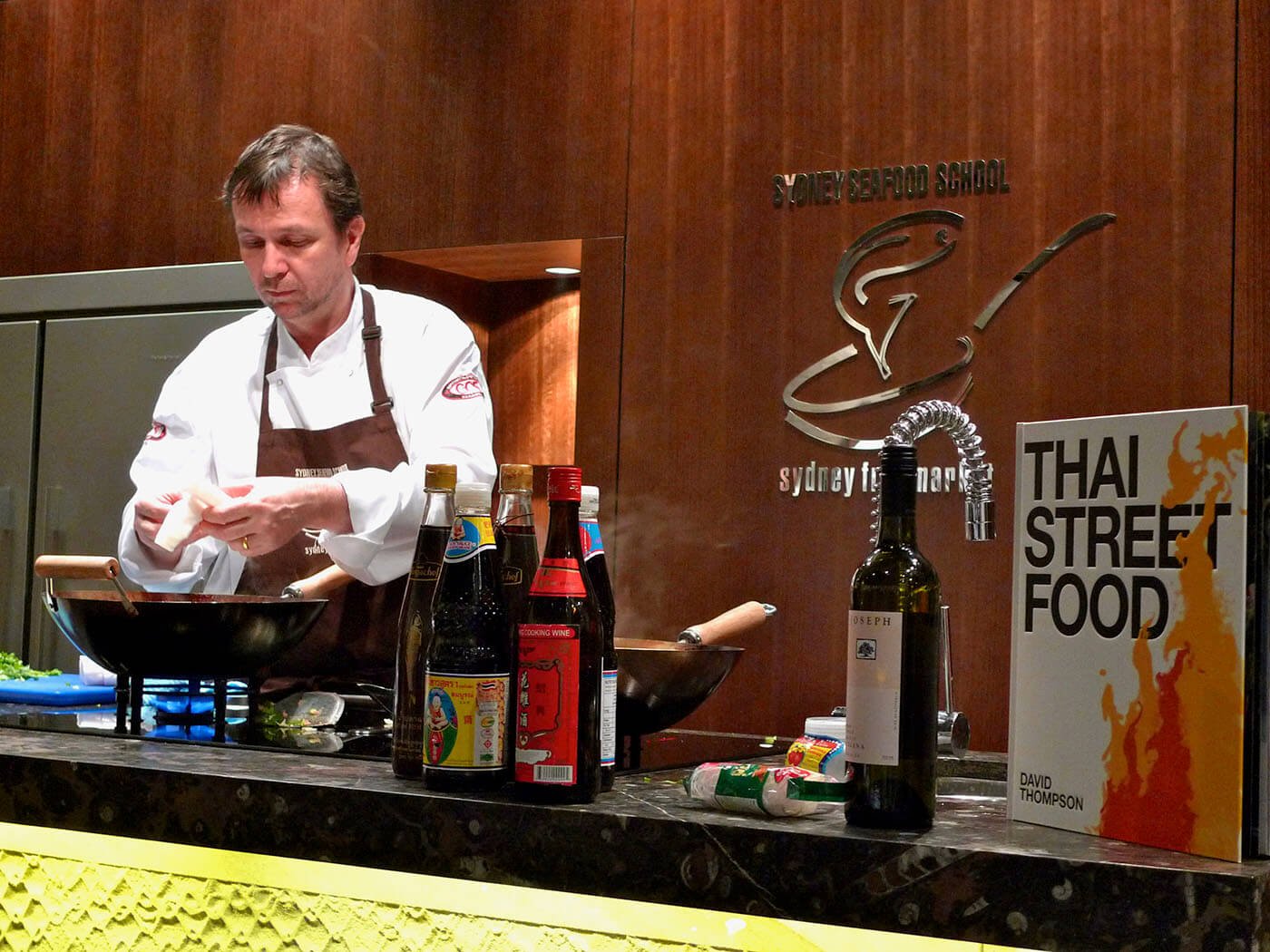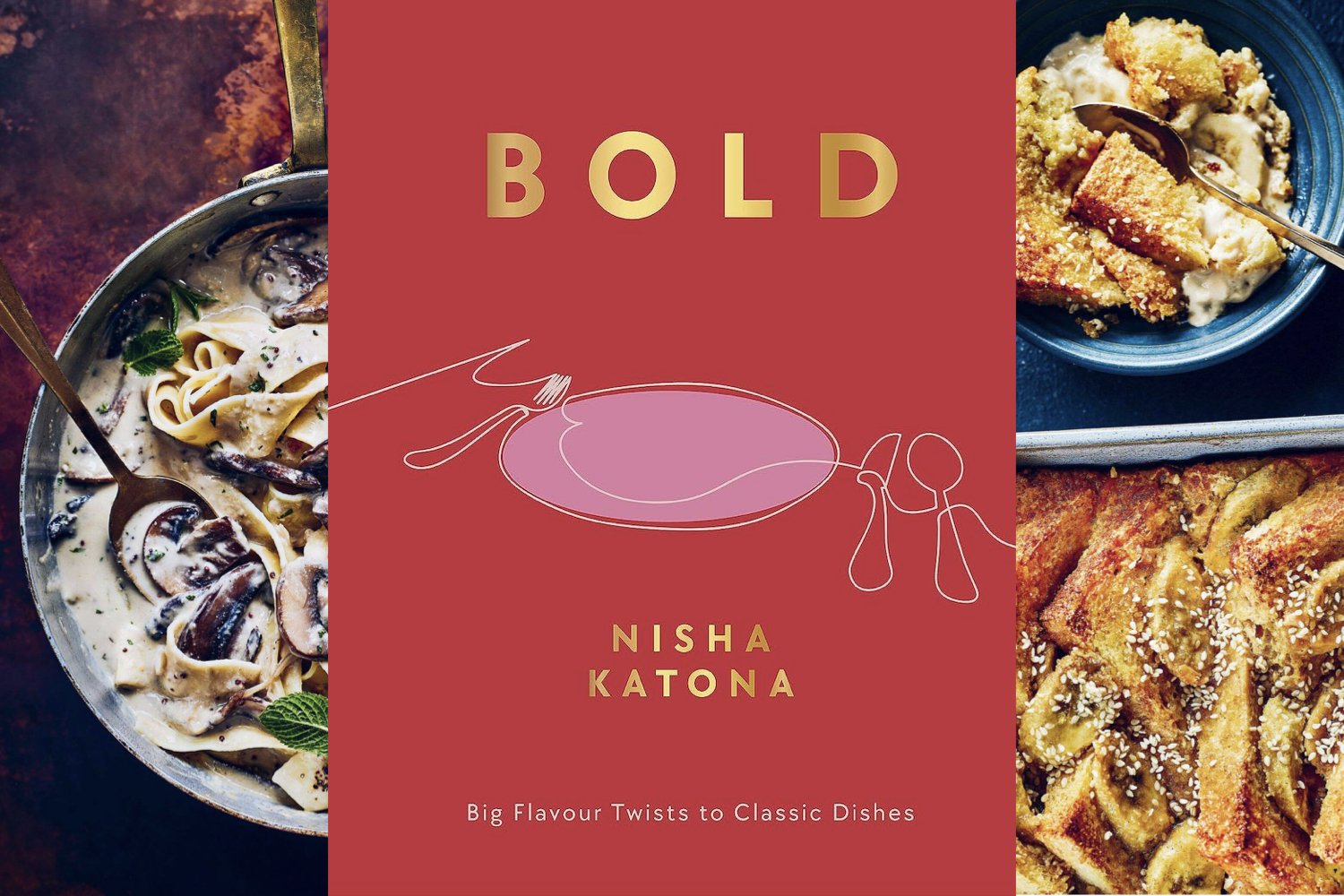Behind the Cookbook: Sydney Seafood School
Roberta Muir ran the Sydney Seafood School for more than a decade and during that time the school hosted a Who’s Who of top Australian and international guest chefs. In Sydney Seafood School Cookbook, Roberta brings together all the key information you need on buying and preparing fish, together with more than 90 battle-tested chef recipes. Below Roberta shares more of the story behind the cookbook.
By Roberta Muir
Sydney Seafood School opened at Sydney Fish Market in November 1989, when Australia’s obsession with food was still in its infancy. ‘Modern Australian’ cuisine was just emerging, French cooking dominated restaurant guides, and basic Asian ingredients – like lemongrass, kaffir lime and fish sauce – were still hard-to-find curiosities.
The School’s initial mission was to drive demand for the by-catch netted when the NSW fishing fleet was targeting the handful of fish that most Aussie’s wanted, such as whiting, snapper and flathead. Many Anglo-Celtic home cooks didn’t know how to prepare the octopus, red mullet, leatherjacket, crabs and other species that also came up in the fishermen’s nets, so a large part of the catch was sold as bait, or for next-to-nothing to cooks who did appreciate them.
I took over the School a few years later, in 1997. It was an exciting time in the evolution of Australia’s restaurant and food scene, with iconic chefs like Janni Kyritsis (MG Garage), Tetsuya Wakuda (Tetsuya’s), Peter Doyle (Cicada), Cheong Liew (The Grange) and Neil Perry (Rockpool) defining the new Australian cuisine – and I was so excited to be in the middle of it all!
By the turn of the century things had already changed a lot. Australians had become much more adventurous eaters. Mussels, octopus and crabs were commonly cooked at home and abalone, sea urchin and sashimi were widely enjoyed. A focus on under-utilised species was no longer necessary and the School’s mission for the new millennia was simply to demystify seafood cookery and excite people about regularly eating fresh Australian seafood at home. Who better to do that than the chefs whose recipes were appearing in the growing number of food magazines and TV cooking shows? So it became my personal mission to have as many of them as possible host cooking classes at the School.
There were a few things I very quickly learned about Australian chefs. First, they’re incredibly generous and keen to share their knowledge. Instead of the stereotypical foreboding men in tall white hats that I expected, I met humble cooks who loved nothing more than discussing their passion for food with anyone keen to listen. Secondly, despite this desire to share their knowledge, they were generally poor recipe writers. What they did every day came so naturally to them that they found it hard to articulate each step of the process and how to tell when something was ready for the next step. “Cook until done” was a common direction in chefs’ recipes, as were phrases like “add enough water to give the desired consistency” and “season to taste”.
So it became my role to translate their ‘chef speak’ into ‘home cook speak’. Rather than just printing the recipes they gave me for the cooking class guests, I asked the questions I imagined a home cook asking. How do I know when it’s done? What’s the desired consistency? What am I seasoning it with? Is the pepper white or black? What should it taste like?
Next I learned that chefs don’t follow their own recipes. It’s only once they start cooking that you really understand how they do things. So I sat in every class I could, watched what they actually did, made notes, then edited and updated the recipes I had on file. So, in 2010 when I sat down to create the Sydney Seafood School Cookbook, I could choose from thousands of well-written, well-tested recipes from hundreds of chefs across a wide range of cuisines, cooking styles and species.
Ultimately the book incorporated recipes from 49 chefs using 60 different species, including less common ones like eel, soft-shell crab, skate and fish head. From classics like bouillabaisse, garlic prawns, prawn bisque, pesce acqua pazza and al cartoccio, to Japanese tataki, Chinese steamed whole fish, Indian Kerala-style prawns, Moroccan tagine, Greek keftethes, Basque tuna brochettes, and a spicy granita oyster topping developed in the USA, they criss-cross the globe. Because chefs love to push boundaries, I even managed to sneak in a little duck, pork and chicken.
Each recipe in the book is there for a reason. Some made me appreciate species I hadn’t previously enjoyed, like blue mackerel or blue mussels topped with hazelnut butter. Some are personal favourites, such as the Mamak crab and prawn plums Cheong Liew served at a long table dinner at The Grange on New Year’s Eve 1999; the oysters Rockefeller Janni Kyritsis served at my 50th birthday party at MG Garage; and the crisp rice cakes with olive oil-braised squid Tim Pak Poy served one night at his Bondi apartment. I included baccala mantecato and spaghetti vongole because they’re two of the most delicious seafood dishes I’ve ever eaten and so easy to make. Others, like the many ways fish can be wrapped – from garfish grilled in bamboo leaves and bream in banana leaf to involtini of john dory wrapped in Sardinian flatbread and Murray cod wrapped in nori – made the final cut for what they taught me, as did Alessandro Pavoni’s clever risottati-style spaghetti.
The Seafood School is about much more than celebrated chefs. The School’s team of passionate and talented kitchen staff presented many of the classes, did all the prep for the chefs’ classes, and assisted guests at every class. These seafood experts helped me finetune the detailed step-by-step photos on how to do everything from fillet, skin and butterfly fish to shuck oysters, peel prawns, strip squid, and prepare abalone. I drew on their collective years of expertise for the purchase, storage and cooking tips that start every section, and they helped with recipe testing and preparing ingredients for the photoshoot.
Despite having been already well-tested at cooking classes, some of the more complex recipes required retesting to ensure the instructions were clear enough for home cooks to get a great result without having the chef there in person. Damien Pignolet’s coulibiac immediately comes to mind. Before we were happy with it, the Seafood School staff had tested it at least twice and Damien had cooked it once in the Seafood School kitchen, with me making notes and adjustments each time. Among ourselves, it was referred to as “the C recipe” (C for coulibiac of course)!
Once the recipes were finalized, it was time to take photos. You can only put so many details into a written recipe and a good photo is the final piece that helps a cook achieve the intended result. Many chefs had told me that they hadn’t recognized their own dishes in other recipe collections because the photo was so different to the way they would have plated it. So I asked each of them to come to the School to finish and plate their dishes for photography. We caught David Thompson on a visit from Bangkok to Sydney, Cheong Liew flew up from Adelaide and Frank Camorra from Melbourne. This also gave me the chance to do one last tweak to the recipes where necessary.
It's almost 15 years since I began compiling the book and a lot’s changed again since then. When I read back over it now, I realise it’s a snapshot of a moment in the history of Australian food. Tony Bilson and Jeremy Strode have passed. Tetsuya Wakuda, Somer Sivrioglu, Dietmar Sawyere and Warren Turnbull now live mostly overseas, a number of our most iconic chefs have retired, and a few have simply dropped out of sight.
Tony Bilson’s whole baked snapper is one of my favourite dishes of all time, for its simplicity and depth of flavour. He taught it at a Seafood for Christmas class when I’d only been at the School a few months and it was the first time I realised how easy it is to cook a whole fish. If you only try one recipe in the entire book, make it this one.
That was also one of the few classes where a chef almost didn’t turn up. They normally arrived about an hour before the guests, so when Tony wasn’t there by 30 minutes before the start time, I called him. “Hi Tony, it’s Roberta from the School.” To which he replied “Oh $%#^, I’ve been at the hospital all night with my wife who had an asthma attack – I’m on my way.” Like the consummate professional he was, he strode in the door a few minutes late and slid behind the demonstration bench saying: “A funny thing happened to me on the way to the class today,” and on he went, without missing a beat. When I told his wife, Amanda, about this at his funeral, she laughed and said: “That’s Tony, I don’t have asthma!” Which makes the story twice as funny I think.
Whether you’re in a hurry or feel like cooking up a storm, seafood is perfect for breakfast, lunch or dinner and you’ll discover a recipe to suit your mood and taste in the pages of the Sydney Seafood School Cookbook. Recipes like seared swordfish with caponata and easy salmon rillettes are perfect for a quick mid-week meal. When you have more time or need to turn on the fancy, you’ll find inspiration in Matt Moran’s scampi in brik pastry, Shannon Bennett’s Marron à la Parisienne, Yoshii-san’s mizore-style coral cod or Stephen Hodges pan-fried fish with potato scales.
Eat more fish – it’s easy and delicious!
ckbk Premium Members have access to the full content of Sydney Seafood School Cookbook and 800+ other cookbooks.
Top recipes from Sydney Seafood School Cookbook
More ckbk features
Winning recipes from the award-winning seafood takeaway in Ullapool, Scotland
Nisha Katona’s latest book takes your tastebuds in new directions with bold twists on classic recipes
Forced rhubarb brings welcome color and delicate flavor to the table in the early spring - here are some great ways to use it










